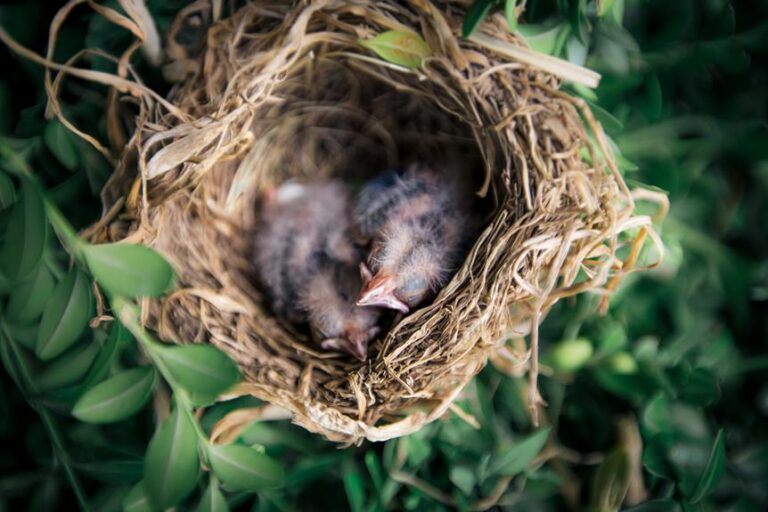Birds have some of the highest metabolic rates of all animals, requiring them to consume large amounts of food on a regular basis.
But why do birds seem so often to be looking for food?
This article will explore the factors that affect a bird’s feeding habits and appetite, such as seasonal variations, environmental conditions, and the need to feed growing nestlings.
We will also discuss the benefits of bird feeders and how to responsibly use them.
Contents
Key Takeaways
- Birds have high metabolic rates and require constant energy due to their active lifestyles.
- The digestive system of birds is designed to extract maximum nutrients from food.
- Different bird species have varying dietary needs based on size, beak structure, and ecological niche.
- Food availability plays a crucial role in determining bird appetite and movements.
Bird Metabolism
Due to their high metabolic rate, birds require a steady supply of food to meet their energy needs. This rate can vary depending on species, with some reducing their metabolic rate to conserve energy. Birds have digestive systems designed to extract maximum nutrients from food, and they can be classified as either insectivorous, herbivorous, or omnivorous.
Seasonal variations and environmental factors are important to consider, as they can affect the availability of food. Breeding seasons may require more food for birds and their nestlings, while scarcity of food can prompt birds to undertake long journeys in search of better resources.
Human intervention, like bird feeders, can also alter the natural foraging patterns of birds. Responsible use of bird feeders is necessary to avoid negative consequences.
Feeding Habits
Birds have complex and varied feeding habits that are determined by a number of factors. Seasonal changes, weather patterns, and food availability all play a role in how much and what type of food birds consume.
Insectivorous birds mainly feed on insects, while herbivorous birds consume fruits and vegetation. Omnivorous birds have a more varied diet, taking advantage of whatever food is available.
Breeding seasons often require more food to feed their nestlings, and birds may migrate in search of better resources when food is scarce.
Human intervention, like bird feeders, can also alter natural foraging patterns. Responsible use of bird feeders is important to avoid negative consequences.
Ultimately, birds strive to keep their energy levels high and their bodies nourished.
Factors Affecting Appetite
Throughout the year, various factors can influence a bird’s appetite. Seasonal variations, such as breeding seasons, can require more food for birds and their nestlings. Environmental factors, like weather patterns and habitat alterations, may also have an impact on food availability.
In winter months, food may be limited and birds may need to adjust their feeding habits. Human intervention, like bird feeders, can also alter natural foraging patterns. Responsible use of bird feeders is important to prevent any negative consequences.
Ultimately, food availability and the nutritional needs of the bird species determine bird movements, prompting birds to undertake long journeys in search of better resources.
Food Availability
Availability of food is a major determinant of bird movements. Seasonal variations influence bird feeding patterns, with an increased demand for food during breeding seasons. Environmental factors, such as weather and habitat alterations, can drastically reduce food availability and prompt birds to undertake long-distance migrations in search of better resources.
Human activity, such as providing bird feeders, can alter natural foraging behavior and have a detrimental effect on bird populations. Nestlings also have high energy demands, requiring parents to work tirelessly to meet their needs. Responsible use of bird feeders can help ensure that birds always have access to the food they need.
Nestlings and Parents
Frequently, parents of birds must work hard to provide enough nourishment for their growing nestlings. Nestlings have high energy demands, often requiring parents to seek out enough food to meet their needs. Parental feeding behaviors exhibit the dedication and care of avian parents, who work tirelessly to satisfy their young.
Here are three interesting facts about nestlings and parental feeding:
- Seasonal variations can significantly affect how much food parent birds must provide. Breeding seasons often require more food for birds and their nestlings.
- Environmental factors like weather patterns and habitat alterations are also important, as they can impact food availability.
- Human intervention, like bird feeders, can alter natural foraging patterns. Responsible use of bird feeders is key to avoiding negative consequences.
Benefits of Feeders
Building on the discussion of parental feeding, bird feeders can offer a variety of benefits to birds in search of food. They provide a reliable food source for birds in areas where natural food may be scarce or difficult to obtain. They can also provide easy access to food for birds in urban areas with limited natural resources.
Bird feeders are also beneficial in winter months when food is more difficult to find. In addition, feeders can be used to attract certain species of birds, allowing birdwatchers to observe them in their natural habitat.
Proper use of bird feeders can be beneficial to birds, although overuse can lead to unhealthy habits and dependence. It is important to use feeders responsibly and in moderation to ensure that birds remain healthy and undisturbed.
Migration Patterns
Often, when food sources become scarce or difficult to access, birds must migrate to find better resources. Migration patterns often depend on the availability of food and shifts in the environment. There are several factors that can affect a bird’s appetite, ranging from seasonal variations to human intervention. Birds rely heavily on their ability to migrate to locate adequate sources of nutrition.
Numeric list:
- Seasonal variations in food availability
- Human intervention, such as bird feeders
- Environmental factors, like weather patterns and habitat alterations
Migration patterns not only help birds to access better food sources but also to breed and find suitable nesting grounds. Bird migration is essential for their survival and involves a great deal of effort and energy expenditure.
It is important to take steps to protect the habitats of birds so that their migration patterns can remain intact. Responsible use of bird feeders can also minimize the disruption to natural foraging patterns.
Responsible Use
Furthermore, responsible use of bird feeders is important to avoid negative consequences on bird migration and foraging patterns. Feeders provide an easy food source, but they can also disrupt natural behaviors. To ensure that bird feeders are used responsibly, it is essential to keep the following in mind:
| Location | Place feeders in areas with plenty of cover, so birds can feed safely. |
| Cleanliness | Empty and clean feeders regularly to prevent diseases. |
| Food type | Provide a variety of food to attract different species. |
| Feeding habits | Refill feeders regularly to maintain a consistent food supply. |
| Visitor impact | Monitor the number of visitors and the amount of food they bring. |
Conclusion
Birds have unique needs and behaviors when it comes to feeding. High metabolic rates, seasonal variations, environmental conditions, and the need for parents to feed young nestlings can all impact a bird’s appetite.
Food availability can also drive bird movement and migration patterns. Feeders can be used to provide supplemental nutrition for birds, but it is important to use them responsibly in order to ensure the health and safety of our avian friends.






